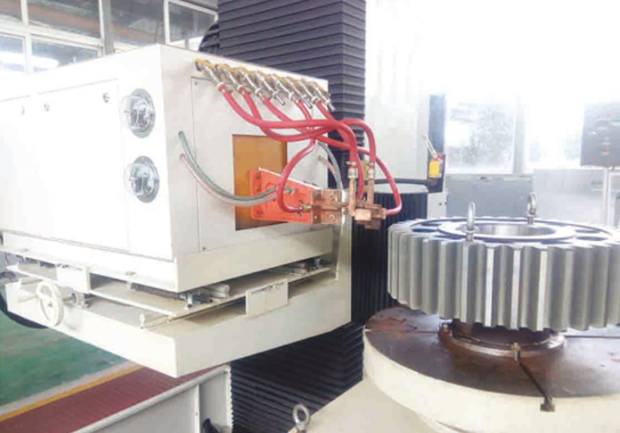Over the years, gear manufacturers have increased their knowledge of producing quality gears and gear-like components. This knowledge has resulted in many improvements, including lower noise, lighter weight and lower cost, as well as increased load carrying capacity to handle higher speeds and torques while generating the least amount of heat.
Gear performance characteristics determine the required surface and core hardness, hardness distribution, residual stress distribution, grade of steel and its prior microstructure.
Depending on the size of the gear, the desired hardness pattern and tooth geometry, one induction hardens the gear by surrounding the entire gear with an induction coil.
Several heat treatments can be performed before or during the gear manufacturing process to prepare the part for fabrication. In many cases, these steps are critical to the manufacture of quality gears.
Annealing is primarily done to soften the part and improve its machinability. There are several annealing processes, all of which involve heating to and holding at a suitable temperature and then cooling at a specific rate, usually through a critical temperature range.
Normalizing plays an important role in the control of dimensional changes during hardening and surface hardening. Normalizing is a process that involves heating the gear to above the upper critical temperature and then cooling at the same rate as still air to relieve residual stresses in the gear blank and maintain dimensional stability during subsequent heat treatments. In a thermal sense, normalizing is austenitizing. In a microstructural sense, normalizing is intended to produce a more uniform microstructure. Standardized parts are very easy to machine, but more difficult than annealed parts.
As the name implies, stress relieving aims to eliminate the internal stresses generated during the manufacturing process of the gear. It is recommended for complex shapes, especially if aggressive machining methods or large inventories are used. Stress relieving involves heating to a temperature below a lower critical temperature, holding the part long enough to completely soak it, and then cooling it slowly enough, usually in air, to minimize the generation of new residual stresses.
A variety of heat treatment process options exist for hardening gears, each aimed at increasing gear hardness. These typically involve heating and rapid cooling and are usually classified as hardening by hardening, surface hardening and surface hardening by applying energy.

Gear sing tooth CNC induction hardening equipment
Pass hardening is a heat treatment method that does not produce a case. Hardness is achieved by heating the material to the austenitic range, typically 815-900ºC (1500-1650ºF), followed by quenching and tempering. It is important to note that uniformity of hardness should not be assumed throughout the gear teeth. Since the outside of the gear usually cools more rapidly than the inside, a hardness gradient can occur. The final hardness depends on the carbon content of the steel. The depth of hardness depends on the hardenability of the steel and the severity of the hardening.
Full hardening can be done before or after cutting the gear teeth. When cutting gear teeth after part hardening, surface hardness and machinability become important factors, especially considering the fact that machining removes some or most of the higher hardness material from the surface.
Surface hardening is used to produce a hard, wear-resistant shell or surface layer on top of a malleable, impact-resistant interior or core. The idea behind case-hardening is to keep the core of the tooth at about 30-40 HRC to avoid tooth breakage, and to harden the outer surface to increase pitting resistance. The higher the surface hardness value, the greater the pitting resistance. However, when the surface hardness reaches about 50 HRC, the bending strength increases, after which this increase is offset by an increase in notch sensitivity.
Please contact CHAOCHANG if you need to know more about the induction hardening.
Baoding Chaochang Electromechanical Co., Ltd.
Copyright © Baoding Chaochang Electromechanical Co., Ltd. All Rights Reserved | Sitemap
